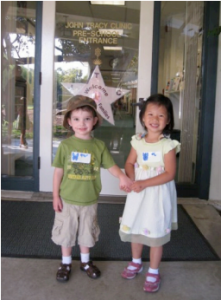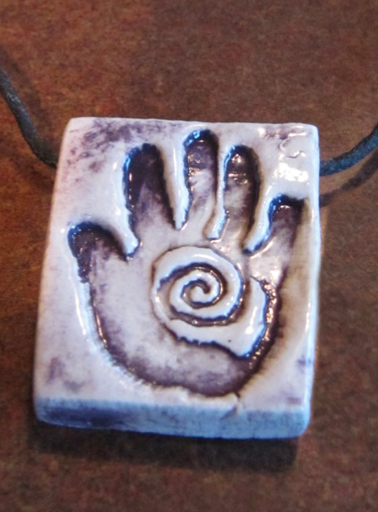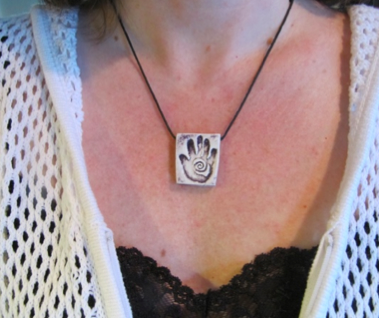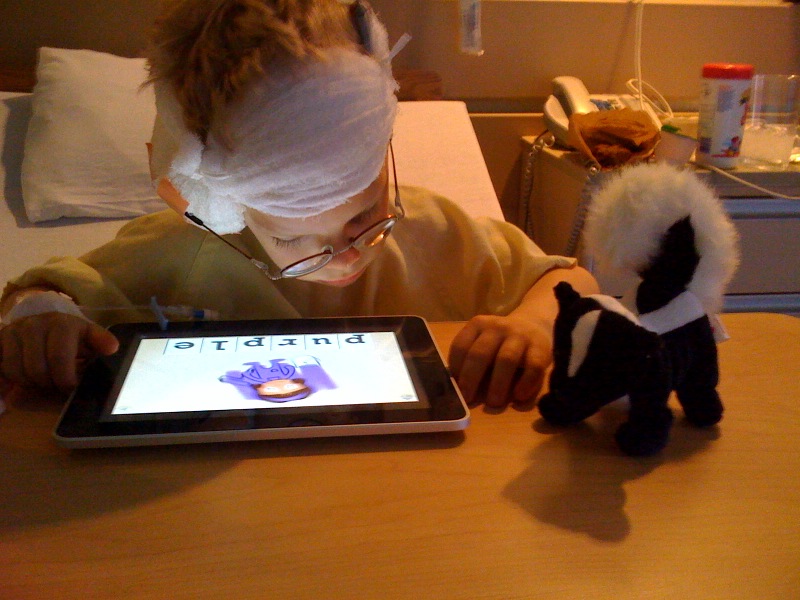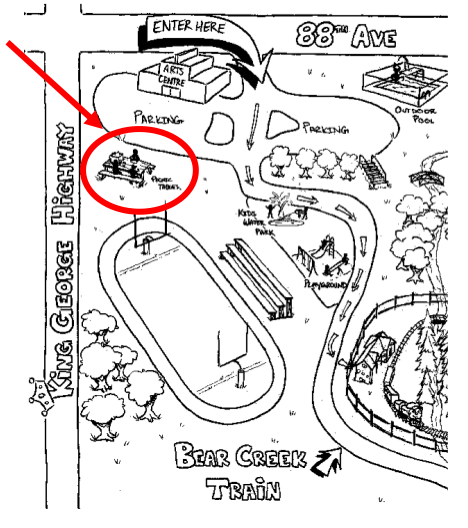by Leeanne Seaver, Hands & Voices ©2010, with contributions from experts at Advanced Bionics, Cochlear Americas, and the University of Colorado Hospital. ©2010 Hands & Voices Communicator, Summer 2010, Reprinted with Permission
The stories we hear the most are inspiring: the deaf girl who won the school spelling bee thanks, in part, to her cochlear implant (CI) that enabled her to participate for the first time in this thoroughly “hearing” event; the Princeton-educated attorney who loves both her CI-friendly iPod and her Deaf cultural lifestyle. There’s no question that cochlear implant technology has changed the landscape of the deaf world and opened up new possibilities for many, many users. But not for all users, all the time. When things aren’t going well, parents often worry that their child is the problem—maybe s/he is the kind of kid the audiologist was referring to when she said “not every kid will be successful with a cochlear implant.” How long does the frustration and anxiety over little-to-no progress go on before it’s determined whether the CI device itself is the problem? What are the red-flags for device failure?
Whether you’re the parent of a child with a cochlear implant or considering this technology for your son or daughter, you need to consider the fallibility of this technology. The good news: in general, it’s rare. The bad news: a CI malfunction known as “soft failure” is difficult to identify, and it can be a long, frustrating process to discover it. If you’ve already lost a lot of time before even beginning to explore this possibility, your kid could be at real risk for language deficits and related problems. Arming yourself with knowledge will help you make informed choices and take prompt action if you’re ever worried about this issue for your child. Hands & Voices (H&V) has invited two major cochlear implant manufacturers and an independent audiologist who works at a large, metropolitan university hospital with many CI patients to share their insights and expertise to help get you started.
H&V: What is “soft failure”? What causes it? How often does it occur? Is there such a thing as “hard failure”?
SHANNON BURNS, AuD, CCC-A: A cochlear implant soft failure is an uncommon occurrence in which a device malfunction is suspected but cannot be proven using currently available methods of assessment. A cochlear implant hard failure may be characterized as more of a sudden loss of function, such as no communication between the internal and external devices. This may be proven with an assessment (integrity test) by the manufacturer of the function/status of the internal device. The Consensus Statement from 10th Symposium on Cochlear Implantation in Children assessed that soft failure:
- Is an uncommon occurrence
- Is a working diagnosis. (Only confirmed by removal, examination and identification of failure mode)
- Diagnosis begins with awareness of common presentations. (Declining performance, aversive symptoms or intermittent function)
- Diagnosis can only be made with complete otological examination, CT scan, expert re- programming, exchange of all external hardware, and integrity testing by the manufacturer.
COCHLEAR AMERICAS: A “soft failure” is a term used by the cochlear implant industry to describe a situation where a patient’s hearing performance has noticeably decreased but the implant integrity testing shows that the implant is functioning as normal. In other words, the implant testing does not show a problem with the internal device, but the patient is not hearing as well as they used to.
There is a wide range of patient clinical situations where a “soft failure” occurs. Therefore we are not able to draw any specific conclusions about what causes “soft failures”. Indeed, quite often a change in a patient’s hearing performance will not be device related, but instead will be related to the patient’s general health or medication.
“Soft failures” do occur, and in one recent study it was reported that 2% of the implant recipients had their implant replaced due to a soft failure (Data was collected from two major cochlear implant centers in the US, and devices were represented from each manufacturer – Cullen et al. 2008). This report does show that the Nucleus Cochlear Implants had a significantly lower incidence of soft failures than the other manufacturers.
A “hard failure” a.k.a “a failed device” is much easier to identify. A hard failure will be identified by a combination of a noticeable drop in a patient’s hearing performance, and the implant integrity testing showing the device as malfunctioning (or not operating as designed).
ADVANCED BIONICS: Cochlear implant “soft failure” is an uncommon occurrence in which a device malfunction is suspected but cannot be confirmed using currently available tools to test the internal device once implanted (often referred to as “integrity testing”). A soft failure may be suspected when there is a lack of or decline in hearing performance, perceptions such as a popping sound or intermittent hearing with the cochlear implant. Re-implantation of another device with subsequent alleviation of symptoms strongly supports the diagnosis of a soft failure but cannot conclusively confirm a device malfunction. A suspected soft failure is confirmed when the device is explanted and a failure mode is identified upon further evaluation and inspection.
A “hard” failure is typically defined when a device malfunction is suspected and indeed confirmed with the available assessment tools (the “integrity” testing).
Testing of the device can be conducted either in-situ (e.g. integrity testing in the ear) or upon return of the explanted device to the manufacturer. Once the device is explanted and returned to the manufacturer, a wide range of tests can be performed to assess the functionality of the device. If none of these tests fail, but the patient is performing better with the new device than with the explanted, then the conclusion is that the explanted device had a “soft failure”. Because the term “soft failure” has come to have a variety of meanings, Advanced Bionics does not actually use this term. Instead, Advanced Bionics uses the following classification scheme based on the testing that was performed on the device:
- Confirmed Device Failure – The explanted device failed a test when it was returned to Advanced Bionics for failure analysis.
- Clinical Failure of Unknown Origin – The device failed an integrity test when it was tested in-situ; however it has yet to fail a test upon return to the manufacturer. In some cases these devices have not yet been explanted and returned to Advanced Bionics.
- Clinically Device Tested OK – Other Reason for Explant – These are cases where the device did not fail any clinical integrity test however the device was explanted and upon return to Advanced Bionics, the device passed all tests. “Soft Failures” would fall into this category. Included in this category is the case where 1.) a patient perceived there was an issue with the device and 2.) integrity testing did not indicate a failure and 3.) upon explant the device was returned and passed all testing and 4.) the patient performed better with the new device than the explanted. The percentage of explanted devices that fall into this category is quite small (less than 2%).
- Medical Explant – Explants for non-device related reasons. These include infections, extrusions, electrode migrations, etc..
H&V: How can families recognize the signs or symptoms of a soft failure?
SHANNON BURNS, AuD, CCC-A: The suspicion of a soft failure begins with the awareness of common presentations including declining performance (decrease in speech perception scores or functional thresholds) and/or aversive symptoms (non-auditory sensations) such as popping or shocking sensation or intermittent function. The working diagnosis of a soft failure is arrived at after painstaking evaluations by the cochlear implant team, manufacturer and patient. A soft failure can only be confirmed by removal, examination of the suspect device, and identification of a failure mechanism.
COCHLEAR AMERICAS: A family would not necessarily recognize the signs or symptoms of a soft failure (as defined). Rather they should focus on the recipient’s hearing. If they notice significant changes in hearing performance they should contact the family member’s audiologist for a consultation. The audiologist would then determine whether programming changes are appropriate or if an integrity test should be performed on the internal device.
ADVANCED BIONICS: For older children who can tell parents about what they are (or are not) hearing, parents should watch for any changes in their child’s ability to hear, any reports of aversive sounds such as pops or changes in sound quality including static or buzzing, and any reports of discomfort, pain or tingling around the head or face.
For young children who cannot report what they hear, parents should watch for unwillingness to wear the device, a change in behaviors (more aggressive, frustrated), a change in attentiveness, and/or a regression or lack of expected development of communication skills.
H&V: What should a family do if they suspect there is a soft failure with their child’s CI?
SHANNON BURNS, AuD, CCC-A: Generally speaking, if there is any significant change in hearing ability, sound quality, or the presence of non-auditory stimulation the family should contact their cochlear implant audiologist immediately for further troubleshooting and assessment. The clinical specialist from the cochlear implant manufacturer may be called upon to perform an integrity test of the internal device, although this test is often “within normal limits” in case of soft failures.
They should have an excellent team of professionals that must including audiologist, speech therapist, physician, parents and educators who are closely connected and all collecting data on progress and benefit over time. This team together discusses progress and can explore the possibility of a “soft” failure as necessary. If these things aren’t in place from the time of implantation (or before) a soft failure may not be identified in a timely manner.
COCHLEAR AMERICAS: They should contact the child’s audiologist for an appointment.
ADVANCED BIONICS: If families note any of the symptoms of soft failure, or if they have any concerns about their child’s hearing performance for that matter, they should check all the external equipment to be certain it is functioning properly and immediately contact the cochlear implant center.
H&V: Are some kids at greater risk for soft failure?
SHANNON BURNS, AuD, CCC-A: No. However, kids who do not have a good team in place can have two problems. First they could have internal device issues or simply processor programming issues that could be overlooked because no one is actively managing/monitoring their hearing. Second, they could be thought to have a “soft” failure when the reason for lack of progress is actually lack of appropriate intervention and follow through.
COCHLEAR AMERICAS: There is no clinical evidence that some kids have a greater risk for soft failure than others. There seems to be more importance around which cochlear implant manufacturer produced the device (as presented in the paper by Cullen et al).
ADVANCED BIONICS: In 2006, Advanced Bionics identified internal moisture problems in a significant number of implants manufactured with a component (called a feedthrough) built by one supplier (“Supplier B”) whereas no such problems occurred in components from another supplier (“Supplier A”). Accordingly, recipients of suspected devices and their cochlear implant teams were notified to monitor for any suspected changes in performance or sound quality. Since that time, AB has manufactured HiRes 90K devices with feedthroughs provided only by Supplier A which demonstrated very high reliability (99.6% 2 year CSR).
While the internal reliability of cochlear implants today is very high, over 99%, parents of children with cochlear implants regardless of type should monitor their child’s performance and discuss any concerns with their cochlear implant surgeon and audiologist.
H&V: What is the recommended protocol when there is a soft failure?
SHANNON BURNS, AuD, CCC-A: Otological examination, CT scan, close monitoring of performance over time, expert re-programming and hearing testing, exchange of all external hardware, and integrity testing by the manufacturer.
COCHLEAR AMERICAS: Any change in hearing performance must be managed by the patient’s audiologist based on the clinical symptoms. This may range from monitoring the patient to requesting an integrity test by the manufacturer. Hearing performance data and other clinical data with the cochlear implant should be continuously monitored, so that if a concern arises, there is baseline data to compare to. These measures, along with information about any medical concerns, can help the implant team and manufacturer make the best recommendation regarding whether or not to replace the device.
ADVANCED BIONICS: The appropriate management option for a child with a suspected soft failure is determined by the cochlear implant team (CI surgeon and audiologist and therapists) and the parents/ caregivers with input from other professionals actively involved with the implant user’s health care. Typically, the cochlear implant team first rules out the possibility of external equipment malfunction and may make programming adjustments and then request a comprehensive integrity test from the manufacturer. A consensus statement from a panel of cochlear implant experts outlined management options as follows: 1) prolonged observation if the device continues to provide substantial benefit and symptoms are tolerable; 2) removal and re-implantation; or 3) in rare cases, implantation of the opposite ear (if not also implanted) when hearing performance is the main concern.
H&V: If a child has to be re-implanted because of soft failure, does his/her family have to pay for the second surgery?
SHANNON BURNS, AuD, CCC-A: Generally the cochlear implant manufacturers support the decision of the surgeon and audiologist to explant/remove a device and will cover expenses not covered by insurance if the device is under warranty. The warranty for the internal devices is 10 years.
COCHLEAR AMERICAS: This does depend on whether the implant was still under warranty, and whether or not it was determined to be a failed device. It is unusual for a family to have to pay for revision surgery
ADVANCED BIONICS: Cochlear implants have a warranty and the center and family should work with the manufacturer on specific cases. Specifically, for Advanced Bionics devices, we make no distinction between “soft” and “hard” failures; rather, we follow the recommendations of the cochlear implant team and cases of suspected soft failure leading to explantation are therefore covered under the terms of the warranty.
H&V: If there has been a soft failure, are there any risks to the child’s brain or internal processes?
SHANNON BURNS, AuD, CCC-A: Generally, no.
COCHLEAR AMERICAS: A soft failure does not add any risks to the child’s brain or internal processes. The risk of surgery to replace the implant is not significantly riskier than the child’s first cochlear implant surgery.
ADVANCED BIONICS: We are aware of no studies or cases showing such risk.
H&V: How long does the CI’s internal device usually last? Should families plan on the need to re-implant their child due to the anticipated “lifespan” of the internal device?
SHANNON BURNS, AuD, CCC-A: The implant is designed to last a life time, but because they have not been in existence for a “life time”, there is no way to know how long they will really last. Also, technology changes/improvements lead people to electively replace internal devices when the benefits are substantial. For instance, some people who received single channel implants from the late 70s or early 80s are having theirs replaced. I would expect that most pediatric patients will have their implant replaced at least once in their life time.
COCHLEAR AMERICAS: Nucleus devices are designed for a lifetime. Cochlear’s implant reliability is the best in the industry and we do not think families should be required to plan on re-implanting their child every few years. For example, for our earliest generation products after 23 years there is a 93% cumulative survival.
ADVANCED BIONICS: The expectation for any cochlear implant is that it should have a minimal chance of failing within a 10 year period. This not to say that there is a zero chance of failing within 10 years, but rather that the probability is acceptably low (well less than 5%). Therefore, families should not have to plan on a re-implantation within the 10 year period. In fact, the reliability of Advanced Bionics current device is such that families have a good chance of not seeing a failure at the 15 or even 20 year mark.
Even so, our life spans are now 70 and 80 years, so the expectation should be that children implanted at two years old will have several cochlear implants over their lifetime. AB builds our implants with the technical capacity or headroom to be upgraded through software programming that requires no surgery. This gives children being implanted today as much access as possible to the breakthroughs of tomorrow with the hope that the device will function much beyond its warranty period. Nevertheless, while the advances of decades to come cannot be predicted today, it may be that some advances are so great they may warrant re-implantation to upgrade hearing performance.
H&V: What else should families know about this topic?
SHANNON BURNS, AuD, CCC-A: It may be important for families to be aware of the potential for electrostatic discharge (ESD) to compromise internal device function.
COCHLEAR AMERICAS: Soft failures are rare. Small fluctuations in a child’s hearing performance are normal. Significant changes in hearing performance may not be normal. Keep good records of your child’s hearing performance, pay attention to significant changes and see your child’s audiologist at yearly intervals or more frequently if required by the condition of the patient.
ADVANCED BIONICS: We are committed to making reliability of our product- both internal and external components- our number one goal. Our patients remain foremost as we demonstrate the importance of quality in all of our daily activities. We continue to invest substantial resources to improve the quality in all that we do.
H&V: What if everything seems to be going ok but no you’re worried?
H&V: Chances are everything is ok! Just be sure your cochlear implant audiologist does a “hearing performance test” with the implant to establish a baseline from which you can measure progress, lack of progress or digression. This is extremely important for every CI user so you know when something is going wrong, and can promptly identify a soft failure in the unlikely event that your child may have one.
Whether it’s a cochlear implant supporting listening and spoken English, or Cued Speech, S.E.E., or American Sign Language—whatever mode or method you’re using, make sure your child is developing language; expect him or her to make progress and achieve fluency that’s age-appropriate. Do all you can and should to ensure that you have the knowledge you need to help your child reach his/her fullest potential.

